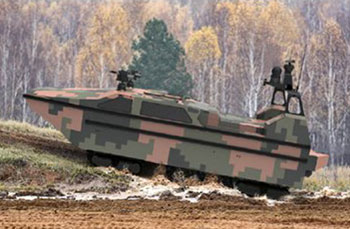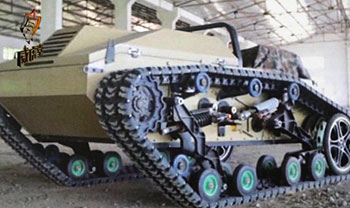INDIAN ARMED FORCES CHIEFS ON OUR RELENTLESS AND FOCUSED PUBLISHING EFFORTS

The insightful articles, inspiring narrations and analytical perspectives presented by the Editorial Team, establish an alluring connect with the reader. My compliments and best wishes to SP Guide Publications.

"Over the past 60 years, the growth of SP Guide Publications has mirrored the rising stature of Indian Navy. Its well-researched and informative magazines on Defence and Aerospace sector have served to shape an educated opinion of our military personnel, policy makers and the public alike. I wish SP's Publication team continued success, fair winds and following seas in all future endeavour!"

Since, its inception in 1964, SP Guide Publications has consistently demonstrated commitment to high-quality journalism in the aerospace and defence sectors, earning a well-deserved reputation as Asia's largest media house in this domain. I wish SP Guide Publications continued success in its pursuit of excellence.
- MoD initiates comprehensive review of Defence Acquisition Procedure 2020, pushes for defence reforms
- G7: The Swansong
- Kalinga Connect: South Asia to Polynesia
- Advanced MRSAM for India for a greater firepower
- Must Credit DRDO for Operation Sindoor, now what is next for defence R&D?
- Operation Sindoor | Day 2 DGMOs Briefing
- Operation Sindoor: Resolute yet Restrained
China's Combat Robots
 |
The Author is Former Director General of Information Systems and A Special Forces Veteran, Indian Army |


The use of robots in warfare, which earlier was a topic for science fiction, is increasingly being researched to fight future wars. Some believe the future of modern warfare will be largely fought by automated weapons systems. The advent of drones and robots is revolutionizing combat in the air, land, sea and underwater. Swarm attacks are being undertaken with deadly accuracy, as was demonstrated by Houthis attacking Saudi Arabia's Aramco oil processing facilities on September 14, 2019. More and more research and development is being undertaken in this field including in our neighborhood and advances weapon platforms in this category are being developed.
While inaugurating a new building of DRDO in 2006, then Prime Minister Manmohan Singh had announced that India will be pursuing technologies for developing a robotic army. The impetus obviously was the realization that trans-national actors and unconventional forces pose a growing threat when compared to the risk of a traditional inter-state conflict, plus robotic plans announced by other nations like the Killbots Army by Republic of Korea. Yet 14 years down the line, the DRDO has not really moved beyond showcasing the 'Sarap' and 'Daksh', latter being a fully automated, battery-controlled robot on wheels that can be used for bomb recovery. There is also recent news that HAL is likely to manufacture armed drones in collaboration with an Israeli firm under 'Make in India', which will largely imply Israeli technology with HAL providing the space and infrastructure – little indigenous content to be proud about. This state is despite considerable caliber in the private sector, IITs and even youth making remarkable innovations.
In contrast, China is making rapid advances in this sphere. In March 2018, China demonstrated 'Sohu'; a Type 59 Main Battle Tank (MBT) platform being driven remotely by a soldier using an independent computer terminal with a steering wheel to control and drive it. This indicated that PLA has developed their first unmanned main battle tank. PLA had simultaneously also launched the development of unmanned vessel, fighter and combat helicopter. On April 8, 2019, China's Shipbuilding Industry Corporation (CSIS) delivered the armed amphibious drone boat 'Marine Lizard' to the PLA. The 12 metre long Marine Lizard is trimaran propelled by a diesel-powered turbojet and can reach a speed of 50 knots maintaining stealth. While approaching land the amphibious drone can release four continuous track units hidden under its belly, and can travel at 20 km an hour on land.
On August 22, 2019, China launched an unmanned warship, which, its developer claims, is combat-ready. The warship, jointly developed by No. 716 and No. 702 research institutes under China's state-owned China Shipbuilding Industry Corporation (CSIC), has a length of about only 15 m and a displacement of 20 tonnes. The 'JARI' multi-purpose unmanned combat vessel held its launch ceremony on August 21. In October 2016, PLA organised the unmanned ground system final challenge in which 73 teams from 44 universities, institutions and private companies participated. During the Unmanned Systems and Conference 2020 (UMEX 2020) at Abu Dhabi in February 2020, a Chinese company unveiled 'Mule-200; a new versatile combat robot that can transport ammunition and supplies in difficult and complicated terrain or provide fire cover when armed.
The Miule-200 is a medium-sized, multipurpose crawler UGV designed to accompany infantry units and transport ammunition and supplies, equip firearms and proved fire support at close range. Developed by Zhomg Tian Zhi Kond Technology Holding Company with the modular design concept,Mule-200 can switch loads for transport, reconnaissance, combat and communication relay for different missions. While other UGVs leave the loads in the open, Mule-200 stores the loads within its body having armour protection. With two caterpillar tracks, the Mule-200 can travel in all types of terrain. It can run at a top speed of 50 kmph to the longest range of 50 km carrying a maximum load of 200 kgs, weight of the robot itself being 500 kgs.
Future warfare is expected to feature intensive unmanned weapon system operations for which China is getting prepared, optimizing on artificial intelligence for future conflict scenarios. China is even looking to build 'iron man' suits that enable soldiers to fly. This needs to be viewed in backdrop of the China-Pakistan nexus and the proliferation of unmanned weapon systems in future operations.





